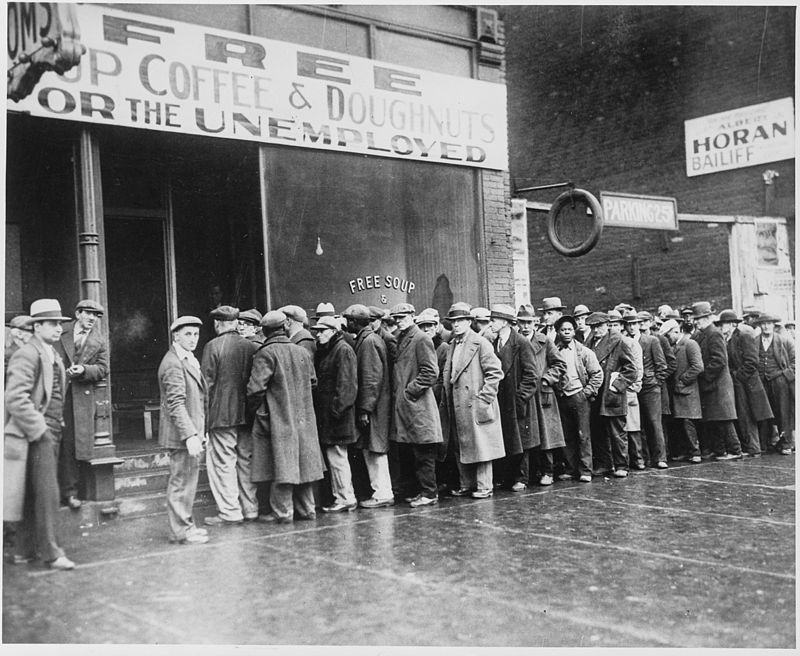It is believed the term “breadline” entered the popular lexicon in the 1880’s. It was during those years that a noteworthy bakery in New York City’s Greenwich Village, “Fleischmann Model Viennese Bakery,” instituted a policy of distributing unsold baked goods to the poor at the end of their business day. By the late 19th-century soup kitchens were to be found in several US cities. The concept of soup kitchens hit the mainstream of United States consciousness during the Great Depression. One soup kitchen in Chicago was even sponsored by the American mobster Al Capone in an effort to clean up his image

The Great Depression was a severe worldwide economic depression that took place during the 1930s. The timing of the Great Depression varied across nations; however, in most countries it started in 1929 and lasted until the late 1930’s. It was the longest, deepest, and most widespread depression of the 20th century. In the 21st century, the Great Depression is commonly used as an example of how far the world’s economy can decline.
The depression originated in the United States, after a fall in stock prices that began around September 4th, 1929, and became worldwide news with the stock market crash of October 29th, 1929 (known as Black Tuesday). Between 1929 and 1932, worldwide GDP fell by an estimated 15%. By comparison, worldwide GDP fell by less than 1% from 2008 to 2009 during the Great Recession. Some economies started to recover by the mid-1930s. However, in many countries, the negative effects of the Great Depression lasted until the beginning of World War II.
The Great Depression had devastating effects in countries both rich and poor. Personal income, tax revenue, profits and prices dropped while international trade plunged by more than 50%. Unemployment in the U.S. rose to 25% and in some countries rose as high as 33%.
Cities all around the world were hit hard, especially those dependent on heavy industry. Construction was virtually halted in many countries. Farming communities and rural areas suffered as crop prices fell by approximately 60%. Facing plummeting demand with few alternate sources of jobs, areas dependent on primary sector industries such as mining and logging suffered the most.
